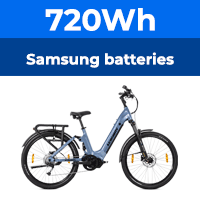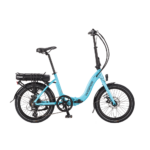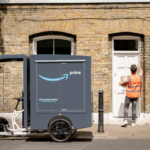I am thinking about doing some experiments on building my own battery based on A123 cells. My bike is a an old Euro model Powabyke with lead acid batteries. There are some questions I need answered first.
1 Does my bike have a low voltage cut out, and if so, what is the cut out voltage.
2 I understand that A123 cells are used in some 18 volt power tools. In such cases, what, if any provision is made for cell balancing during the life of the battery.
3 Bulk charging of battery. Suppose for argument`s sake, that I build a small battery consisting of 12 cells in series . Can I use my existing SLA charger belonging to the bike, or is this likely to charge the cells to too high a voltage ?
Consider a cheap car battery charger , consisting of just a transformer and a bridge rectifier. The output voltage of the charger will be between 13.8 and 14 volts. If you connect it to a "flat" battery having a terminal voltage of say 11 volts, the initial charge current will be about 4 or 5 amps. As the battery voltage rises, it increasingly opposes the incoming current, until when the battery is fully charged and its voltage reaches about 13.8 volts, the charge current falls to about half an amp. You can leave the charger connected for hours, and it just trickle charges the battery. The question is, can the same technology be applied to A123 cells?
In the past, I have built chargers for various voltages of Lead Acid batteries up to 48 volts. I always wound the transformer myself to give a suitable voltage. As a rule of thumb, you need 11volts AC out of the transformer for every 12 volts of battery voltage. The bridge rectifier boosts the voltage somewhat.
1 Does my bike have a low voltage cut out, and if so, what is the cut out voltage.
2 I understand that A123 cells are used in some 18 volt power tools. In such cases, what, if any provision is made for cell balancing during the life of the battery.
3 Bulk charging of battery. Suppose for argument`s sake, that I build a small battery consisting of 12 cells in series . Can I use my existing SLA charger belonging to the bike, or is this likely to charge the cells to too high a voltage ?
Consider a cheap car battery charger , consisting of just a transformer and a bridge rectifier. The output voltage of the charger will be between 13.8 and 14 volts. If you connect it to a "flat" battery having a terminal voltage of say 11 volts, the initial charge current will be about 4 or 5 amps. As the battery voltage rises, it increasingly opposes the incoming current, until when the battery is fully charged and its voltage reaches about 13.8 volts, the charge current falls to about half an amp. You can leave the charger connected for hours, and it just trickle charges the battery. The question is, can the same technology be applied to A123 cells?
In the past, I have built chargers for various voltages of Lead Acid batteries up to 48 volts. I always wound the transformer myself to give a suitable voltage. As a rule of thumb, you need 11volts AC out of the transformer for every 12 volts of battery voltage. The bridge rectifier boosts the voltage somewhat.







